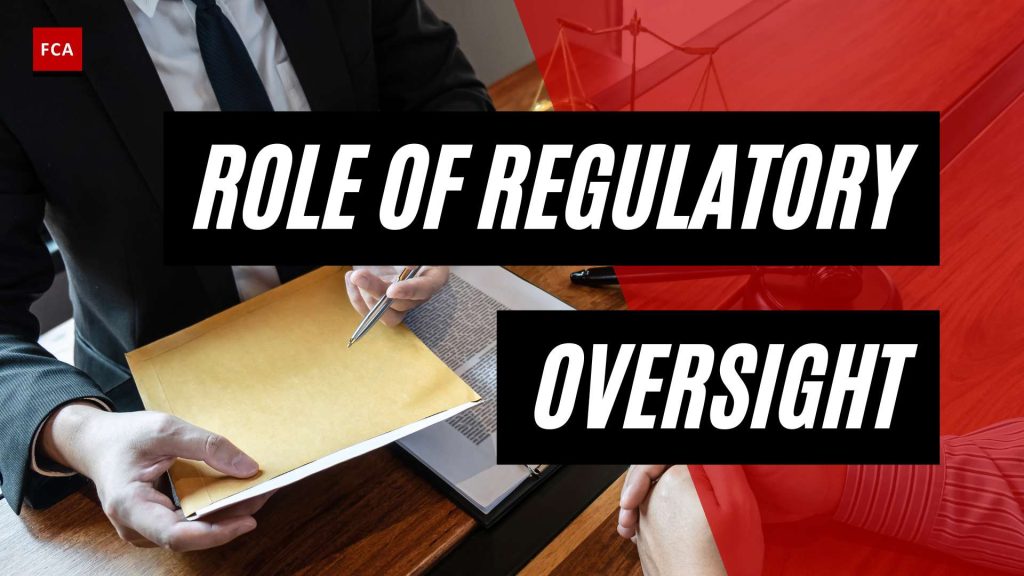Overview of AML Regulatory Bodies
In the world of anti-money laundering (AML) compliance, several regulatory bodies play a crucial role in establishing and enforcing the necessary regulations. Understanding these regulatory bodies is essential for professionals working in compliance, risk management, anti-money laundering, and anti-financial crime. Let’s explore some of the key AML regulatory bodies.
Financial Action Task Force (FATF)
The Financial Action Task Force (FATF) is an international organization dedicated to preventing money laundering and terrorism financing. With 37 member jurisdictions and two regional organizations, the FATF represents the majority of major financial centers worldwide. Its primary goal is to establish global AML compliance standards and promote effective implementation through its guidelines and evaluations.
European Union (EU) Regulations
The European Union has implemented various AML directives and regulations to combat money laundering and terrorism financing. Notably, the Fifth Anti-Money Laundering Directive (5AMLD) was issued in July 2018, followed by the Sixth Anti-Money Laundering Directive (6AMLD) later that year. These directives aim to prevent money laundering and terrorism financing globally and enhance the EU’s AML framework.
Financial Conduct Authority (FCA)
In the United Kingdom, the Financial Conduct Authority (FCA) plays a vital role in regulating the financial industry. The FCA focuses on consumer protection, market integrity, and competition encouragement. It combats money laundering, terrorist financing, and other criminal acts by setting regulatory expectations, conducting investigations, and imposing penalties for non-compliance.
Bank Secrecy Act (BSA)
The Bank Secrecy Act (BSA) is the primary anti-money laundering regulation in the United States. Enforced by the Financial Crimes Enforcement Network (FinCEN), the BSA focuses on combating money laundering and other financial crimes. It requires financial institutions to implement robust AML programs, perform customer due diligence, report suspicious activities, and maintain appropriate records. Non-compliance with the BSA can result in severe penalties, including imprisonment and fines up to $250,000.
China Banking and Insurance Regulatory Commission (CBIRC)
The China Banking and Insurance Regulatory Commission (CBIRC) oversees the banking and insurance sectors in China. It is responsible for monitoring these sectors, ensuring fair competition, and protecting the rights and interests of stakeholders. The CBIRC exercises its jurisdiction throughout the People’s Republic of China (PRC), except for Hong Kong and Macau.
Financial Industry Regulatory Authority (FINRA)
The Financial Industry Regulatory Authority (FINRA) is a self-regulatory organization in the United States that oversees brokerage firms and registered representatives. While FINRA’s primary focus is on investor protection and market integrity, it also plays a role in AML compliance. FINRA provides resources and tools for industry professionals to fulfill their AML requirements and stay updated on regulatory developments.
Understanding the roles and responsibilities of these AML regulatory bodies is essential for organizations and professionals involved in AML compliance. Adhering to their regulations and guidelines helps maintain the integrity of the financial system and protect against money laundering and terrorist financing activities.
Consequences of Non-Compliance with AML Regulations
The consequences of non-compliance with Anti-Money Laundering (AML) regulations can have far-reaching implications for financial institutions. Non-compliance can result in substantial financial impacts, regulatory penalties and fines, as well as reputational damage.
Financial Impact of Non-Compliance
Non-compliance with AML regulations can have a significant financial impact on financial institutions. In fact, globally, an estimated $213.9 billion per year is spent on maintaining financial crime compliance, which is growing at nearly 29% annually. On average, financial organizations can lose up to a total of $15 million in a year due to the consequences of non-compliance, which is 2.71 times higher than what firms typically pay to stay compliant. These financial costs can arise from various factors, such as regulatory fines, legal expenses, and the need for remediation measures to address compliance deficiencies.
Regulatory Penalties and Fines
Regulatory penalties and fines are a common consequence of non-compliance with AML regulations. Financial institutions failing to meet AML requirements may face fines ranging from hundreds of thousands to billions of dollars, depending on the severity and extent of the non-compliance. In 2020, AML fines globally exceeded USD 10 billion, marking an 80% increase compared to the previous year (Unit21). These penalties not only have a direct financial impact but also create a negative perception of the institution’s commitment to AML compliance.
Reputational Damage
Reputational damage is another significant consequence of non-compliance with AML regulations. Financial institutions rely on trust and credibility to maintain customer relationships and attract new clients. Non-compliance can lead to negative publicity, eroding customer trust and damaging the institution’s reputation. The public disclosure of non-compliance incidents can also result in customer attrition and the loss of potential business opportunities. Rebuilding a tarnished reputation can be a lengthy and challenging process, requiring significant investments in public relations and customer outreach.
To mitigate the consequences of non-compliance, financial institutions must prioritize AML regulatory compliance and implement robust AML programs. This includes establishing effective internal controls, conducting regular risk assessments, and staying up to date with AML regulatory requirements. Additionally, leveraging advanced technologies, such as AI, machine learning, and big data analytics, can enhance the effectiveness and efficiency of AML compliance efforts, helping institutions stay ahead of evolving regulatory expectations.
By understanding the potential consequences of non-compliance with AML regulations, financial institutions can make informed decisions and allocate resources to ensure robust AML compliance programs. Compliance with AML regulations not only helps mitigate financial risks and regulatory penalties but also safeguards the institution’s reputation and fosters trust among stakeholders.
Importance of AML Regulatory Oversight
In the realm of anti-money laundering (AML) compliance, regulatory oversight plays a crucial role in ensuring the integrity of the financial system and safeguarding against illicit activities. There is an increasing scrutiny on AML compliance, as regulators around the world recognize the importance of combating money laundering and terrorist financing. This section highlights the importance of AML regulatory oversight, the expectations and standards set by regulatory bodies, and the role of technology in enhancing AML measures.
Increasing Scrutiny on AML Compliance
Regulators globally are placing greater emphasis on AML regulatory oversight, with approximately 77% of financial institutions experiencing increased scrutiny in this area since 2019 (Financial Crime Academy). This heightened scrutiny is driven by the need to combat money laundering, terrorist financing, and other financial crimes. Financial institutions are required to adhere to AML legislation, laws, and regulations (aml legislation), as well as comply with the expectations and standards set by regulatory bodies.
Regulatory Expectations and Standards
Regulatory bodies, such as the Financial Action Task Force (FATF) and national financial regulators, establish expectations and standards for AML compliance. These expectations encompass a wide range of areas, including customer due diligence, transaction monitoring, suspicious activity reporting, and record-keeping (aml regulatory requirements). In 2021, the FATF adopted new standards, further increasing regulatory expectations on AML compliance and pushing financial institutions to enhance their AML measures (Financial Crime Academy). Compliance with these expectations and standards is critical to maintaining the integrity of the financial system and preventing money laundering and terrorist financing activities.
Role of Technology in Enhancing AML Measures
Technology plays a crucial role in enhancing AML measures and facilitating regulatory oversight. Advancements in artificial intelligence (AI), machine learning, and big data analytics have revolutionized AML compliance by enabling more efficient and effective detection of suspicious activities. These technologies can analyze vast amounts of data, identify patterns, and detect anomalies that may indicate potential money laundering or terrorist financing activities.
Digital identification solutions have also emerged as a powerful tool in AML compliance. These solutions enable robust customer due diligence by verifying the identity of individuals and businesses, reducing the risk of identity fraud and enhancing the accuracy of customer profiling.
Furthermore, the rise of cryptocurrency exchanges has necessitated the development of AML policies tailored to the unique challenges of digital currencies. Regulators and financial institutions are leveraging technology to monitor cryptocurrency transactions and identify potential money laundering risks associated with these platforms.
By leveraging technology, financial institutions can enhance their AML measures, improve detection capabilities, and streamline compliance processes. This enables them to meet the expectations and standards set by regulatory bodies while mitigating the risk of financial crime.
In summary, AML regulatory oversight is of paramount importance in combating money laundering and terrorist financing. Regulators are increasing scrutiny on AML compliance, and financial institutions must adhere to regulatory expectations and standards. Embracing technology and leveraging advancements in AI, machine learning, big data analytics, and digital identification solutions is crucial for enhancing AML measures and meeting regulatory requirements. By prioritizing AML regulatory oversight, financial institutions can contribute to a safer and more secure financial system.
Global AML Regulatory Landscape
In the fight against money laundering, an effective regulatory framework is crucial. Various regulatory bodies across the globe work to establish and enforce anti-money laundering (AML) regulations. Understanding the key regulators in different jurisdictions is essential for organizations and professionals involved in compliance, risk management, and anti-financial crime.
Key Regulators in the United States
The United States has a comprehensive AML regulatory landscape with multiple agencies overseeing compliance for financial institutions. These key regulators include:
-
The Financial Crimes Enforcement Network (FinCEN): As the primary AML regulator in the U.S., FinCEN enforces the Bank Secrecy Act (BSA) and its regulations. FinCEN focuses on combatting money laundering, terrorist financing, and other financial crimes. Non-compliance with the BSA can result in significant penalties, including imprisonment and fines up to $250,000.
-
The Financial Industry Regulatory Authority (FINRA): FINRA plays a crucial role in regulating the securities industry and ensuring AML compliance. It provides tools and resources for industry professionals to fulfill their AML obligations, including continuing education requirements and compliance tasks.
-
The Office of Foreign Assets Control (OFAC): OFAC administers and enforces economic and trade sanctions to combat money laundering, terrorist financing, and other threats to national security. Financial institutions must comply with OFAC regulations to avoid penalties and reputational risks.
-
Other regulators: Additional regulators involved in AML oversight in the United States include the Federal Trade Commission (FTC), Consumer Financial Protection Bureau (CFPB), U.S. Securities and Exchange Commission (SEC), Commodity Futures Trading Commission (CFTC), Office of the Comptroller of the Currency (OCC), and National Credit Union Administration (NCUA).
Financial Transactions and Reports Analysis Centre of Canada (FINTRAC)
In Canada, the main AML regulator is the Financial Transactions and Reports Analysis Centre of Canada (FINTRAC). Established in 2000, FINTRAC is responsible for investigating and identifying financial crimes in compliance with the Proceeds of Crime (Money Laundering) and Terrorist Financing Act (PCMLTFA). Financial institutions in Canada must report suspicious transactions and implement effective AML measures to prevent money laundering and terrorist financing.
Impact of Financial Action Task Force (FATF)
The Financial Action Task Force (FATF) is an international organization that plays a critical role in setting global AML compliance standards. With 37 member jurisdictions and two regional organizations, FATF represents the majority of major financial centers worldwide.
FATF’s primary goal is to prevent money laundering and terrorism financing by establishing and promoting best practices. Its guidelines and recommendations serve as a reference for countries to develop their AML regulations. Compliance with FATF standards is crucial for maintaining the integrity of the global financial system and preventing financial crimes on a global scale. The impact of FATF’s work is felt across jurisdictions as countries strive to align their AML frameworks with FATF’s guidelines (Unit21).
Understanding the global AML regulatory landscape and the roles of key regulatory bodies is essential for organizations and professionals involved in anti-money laundering efforts. Compliance with AML regulations, both domestically and internationally, helps safeguard the financial system, prevent criminal activities, and protect the integrity of businesses and institutions.
Technological Advancements in AML Compliance
As the fight against money laundering intensifies, advancements in technology play a crucial role in enhancing Anti-Money Laundering (AML) compliance efforts. Financial institutions are leveraging cutting-edge technologies to improve their AML processes and stay ahead of evolving money laundering techniques. In this section, we will explore three key technological advancements in AML compliance: AI, Machine Learning, and Big Data; Digital Identification Solutions; and Cryptocurrency Exchanges and AML Policies.
AI, Machine Learning, and Big Data
Financial institutions are harnessing the power of AI, machine learning, and big data analytics to strengthen their AML measures. By moving beyond traditional approaches, these technologies enable institutions to identify anomalies and monitor transactions more effectively. AI and machine learning algorithms can detect suspicious activities, identify patterns, and improve risk assessment, minimizing false-positive rates and enhancing detection capabilities (Unit21). Additionally, big data analytics enable the mapping of strings of transactions to uncover patterns, origins of illegal behavior, and individuals or organizations involved in the money laundering process (Sanction Scanner).
Digital Identification Solutions
Digital identification solutions have revolutionized the AML landscape by enhancing customer due diligence (CDD) processes. Technologies such as electronic Know Your Customer (eKYC) and machine learning streamline identification procedures, enabling more efficient and accurate verification of customer identities. These solutions help identify money laundering and terrorist financing risks more effectively, ensuring compliance with AML regulations (Sanction Scanner). By leveraging AI and machine learning, financial institutions can verify customer identities with greater speed and accuracy, reducing the risk of money laundering and fraud (Unit21).
Cryptocurrency Exchanges and AML Policies
With the rise of cryptocurrencies, ensuring AML compliance in the digital asset space has become increasingly important. Cryptocurrency exchanges are implementing stricter AML policies and Know Your Customer (KYC) procedures to prevent money laundering and illicit activities. These exchanges are adopting advanced technologies, including blockchain analytics and AI, to monitor and detect suspicious transactions. By complying with AML regulations, cryptocurrency exchanges mitigate the risk of money laundering and terrorist financing. In 2019, $2.8 billion in illicit funds were laundered through bitcoin exchanges, underscoring the need for robust AML policies and KYC procedures (Sanction Scanner).
As technology continues to advance, financial institutions are able to refine their AML compliance measures. AI, machine learning, and big data analytics enhance detection capabilities, digital identification solutions streamline customer due diligence, and cryptocurrency exchanges adopt stringent AML policies. By leveraging these technological advancements, institutions can better combat money laundering, protect their reputation, and ensure compliance with regulatory requirements.
Resources for AML Compliance
Ensuring compliance with Anti-Money Laundering (AML) regulations is of utmost importance for organizations across various industries. To support professionals in their efforts to maintain AML compliance, several resources are available. Two notable resources in the AML compliance landscape are the Financial Industry Regulatory Authority (FINRA) and the impact of Youverify, a recognized RegTech100 company.
Financial Industry Regulatory Authority (FINRA)
FINRA provides a range of resources and tools for industry professionals, including registered representatives, to navigate AML compliance. They offer guidance, rules, and regulations related to AML, helping professionals stay up to date with evolving requirements. One key aspect of FINRA’s offerings is their focus on education and training. They provide resources and tools to fulfill Continuing Education requirements, view industry CRD records, and perform other compliance tasks.
By leveraging FINRA’s resources, professionals can enhance their understanding of AML regulations, stay informed about regulatory updates, and ensure compliance within their organizations.
Youverify’s Impact in AML Compliance
As of 2023, Youverify has been recognized as a RegTech100 company, highlighting the company’s innovation and impact in the regulatory technology space, including AML compliance. Youverify offers cutting-edge solutions that help organizations streamline their AML compliance processes, mitigate risks, and detect potential money laundering activities.
Through advanced technologies such as artificial intelligence (AI), machine learning, and big data analytics, Youverify enables organizations to efficiently assess and monitor customer data, identify suspicious transactions, and ensure compliance with AML regulatory requirements. Their digital identification solutions provide enhanced verification capabilities, facilitating the authentication of customer identities and reducing the risk of fraudulent activities.
By leveraging the impact of Youverify’s innovative solutions, organizations can enhance their AML compliance measures, minimize the risk of financial crime, and meet regulatory expectations in an increasingly complex regulatory landscape.
By utilizing resources such as FINRA and leveraging the impact of innovative companies like Youverify, professionals can enhance their AML compliance efforts. These resources provide valuable guidance, tools, and technologies to navigate the ever-evolving AML regulatory landscape, mitigate risks, and protect organizations from the severe consequences of non-compliance.








